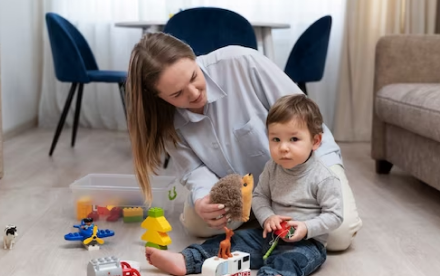In the world of early childhood education, the Montessori approach stands out for its emphasis on holistic development and hands-on learning experiences. At the heart of this methodology lies sensory play, a cornerstone element that nurtures young minds in profound ways. Let's explore the rich tapestry of sensory play within Montessori education and uncover its manifold benefits for children's growth and development.
Understanding Sensory Play
Sensory play encompasses activities that stimulate one or more of the senses—sight, sound, touch, taste, and smell. These activities are not only enjoyable but also essential for children's cognitive, social, and emotional development. In the Montessori philosophy, sensory play is deeply intertwined with learning, as it allows children to explore and make sense of the world around them through direct experiences.
The Cognitive Benefits
Sensory play serves as a catalyst for cognitive development, creating neural connections in the brain and laying the groundwork for future learning. When children engage in sensory activities, they actively observe, manipulate, and experiment with various materials and sensations. These experiences enhance their problem-solving skills, spatial awareness, and scientific inquiry, as they learn to predict outcomes and understand cause-and-effect relationships.
Emotional Regulation and Well-being
In addition to cognitive benefits, sensory play plays a crucial role in supporting children's emotional development and well-being. By engaging their senses, children experience a sense of calm and relaxation, reducing stress and anxiety levels. Sensory activities also provide opportunities for self-expression and emotional regulation, as children learn to identify and articulate their feelings through sensory exploration.
Fine Motor Skill Development
Sensory play offers valuable opportunities for honing fine motor skills, which are essential for tasks such as writing, drawing, and self-care activities. Whether squeezing playdough, threading beads, or pouring water, children refine their hand-eye coordination, grip strength, and dexterity through hands-on sensory experiences. These skills form the foundation for future academic and life skills, empowering children to navigate their environment with confidence and competence.
Examples of Sensory Activities
Parents can easily incorporate sensory play into their daily routines at home, enriching their children's learning experiences in simple yet meaningful ways. Some examples of sensory activities include:
Exploring Nature: Take a nature walk and encourage children to touch different textures, listen to bird sounds, and smell flowers.
Messy Play with Sensory Bins: Fill a bin with rice, beans, or water and add scoops, cups, and toys for children to explore textures and develop pouring skills.
Sensory Art: Provide various art materials such as finger paints, clay, or chalk to stimulate creativity and sensory exploration.
Outdoor Water Play: Set up a water table or play pool for children to splash, pour, and experiment with water in a safe and supervised environment.
Incorporating these sensory activities into children's daily routines not only enhances their learning experiences but also strengthens parent-child bonds through shared moments of discovery and play.
Sensory play is more than just fun and games—it's a fundamental aspect of Montessori education that nurtures children's development across multiple domains. By engaging their senses, children embark on a journey of exploration, discovery, and learning that lays the groundwork for future success. As parents and educators, let us embrace the power of sensory play and create enriching environments where children can thrive and flourish.

